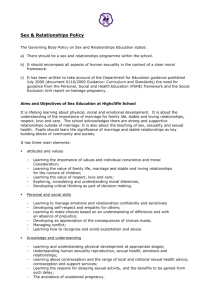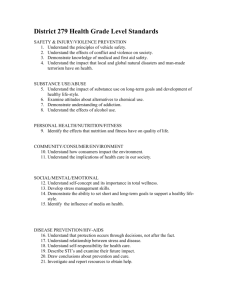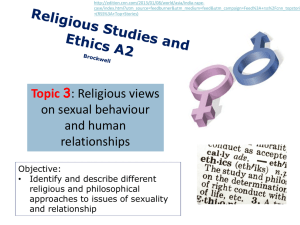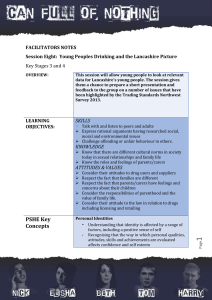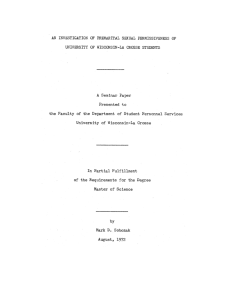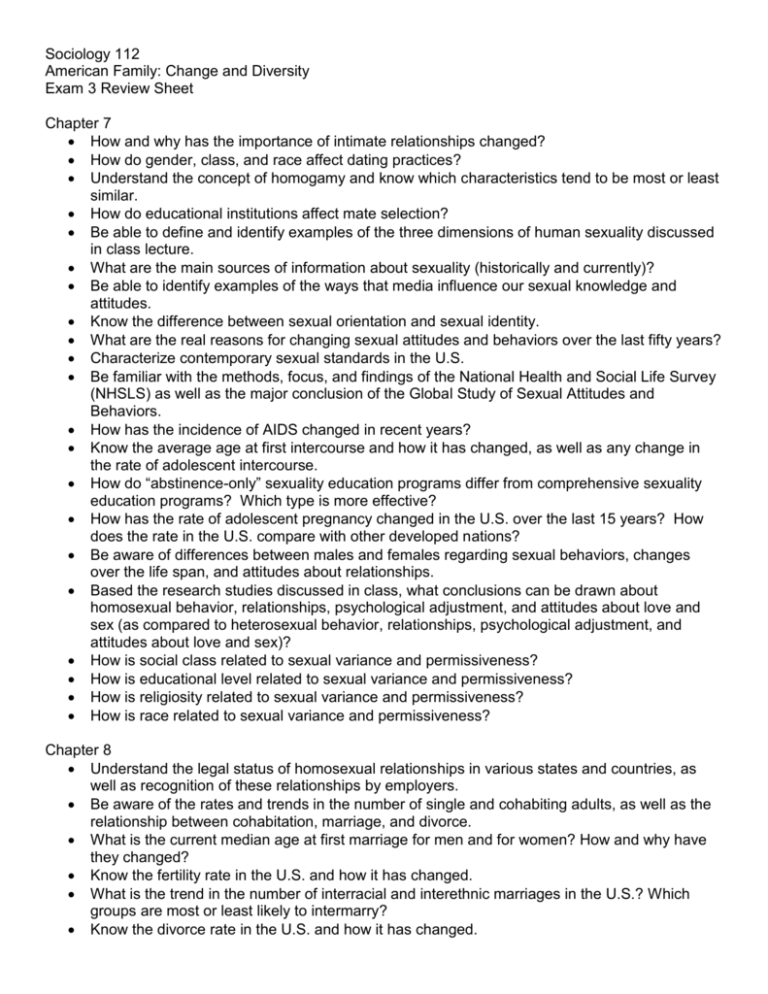
Sociology 112
American Family: Change and Diversity
Exam 3 Review Sheet
Chapter 7
How and why has the importance of intimate relationships changed?
How do gender, class, and race affect dating practices?
Understand the concept of homogamy and know which characteristics tend to be most or least
similar.
How do educational institutions affect mate selection?
Be able to define and identify examples of the three dimensions of human sexuality discussed
in class lecture.
What are the main sources of information about sexuality (historically and currently)?
Be able to identify examples of the ways that media influence our sexual knowledge and
attitudes.
Know the difference between sexual orientation and sexual identity.
What are the real reasons for changing sexual attitudes and behaviors over the last fifty years?
Characterize contemporary sexual standards in the U.S.
Be familiar with the methods, focus, and findings of the National Health and Social Life Survey
(NHSLS) as well as the major conclusion of the Global Study of Sexual Attitudes and
Behaviors.
How has the incidence of AIDS changed in recent years?
Know the average age at first intercourse and how it has changed, as well as any change in
the rate of adolescent intercourse.
How do “abstinence-only” sexuality education programs differ from comprehensive sexuality
education programs? Which type is more effective?
How has the rate of adolescent pregnancy changed in the U.S. over the last 15 years? How
does the rate in the U.S. compare with other developed nations?
Be aware of differences between males and females regarding sexual behaviors, changes
over the life span, and attitudes about relationships.
Based the research studies discussed in class, what conclusions can be drawn about
homosexual behavior, relationships, psychological adjustment, and attitudes about love and
sex (as compared to heterosexual behavior, relationships, psychological adjustment, and
attitudes about love and sex)?
How is social class related to sexual variance and permissiveness?
How is educational level related to sexual variance and permissiveness?
How is religiosity related to sexual variance and permissiveness?
How is race related to sexual variance and permissiveness?
Chapter 8
Understand the legal status of homosexual relationships in various states and countries, as
well as recognition of these relationships by employers.
Be aware of the rates and trends in the number of single and cohabiting adults, as well as the
relationship between cohabitation, marriage, and divorce.
What is the current median age at first marriage for men and for women? How and why have
they changed?
Know the fertility rate in the U.S. and how it has changed.
What is the trend in the number of interracial and interethnic marriages in the U.S.? Which
groups are most or least likely to intermarry?
Know the divorce rate in the U.S. and how it has changed.
Know the remarriage rate and how it differs based on gender, age, race, and parental status.
What are the benefits of marriage? How are these benefits affected by income, race, and
gender?
Be familiar with the conclusions of Cuber and Haroff’s study of enduring marriages.
What factors are correlated with marriage quality and why?
Know which factors have a positive effect on communication in marriage and which ones have
a negative effect.
Be aware of gender based differences in sexual intimacy.
How can sex be used as an instrument of power? Which partner controls that power?
Understand how gender, resources, social class, race, and various individual factors affect the
distribution of power and decision making in marriage.
What, if any, are the current trends toward egalitarian marriage?
Characterize peer marriage.
What conclusion is drawn by the authors of your textbook regarding the changes in marriage?
Chapter 9
What are the consequences of the social construction of parenthood?
Be able to identify the social forces that influence our current social construction of childhood
and understand how parenting styles and the stages of the life cycle have changed.
Understand the long term trend in fertility and the reasons for the current fertility rate in the
U.S.
How is family size related to outcomes for children and marital satisfaction for parents?
Be aware of differences in fertility rates based on social class, race, and religion.
Know the trend in the number of women remaining childless and the primary reason for that
trend.
How do most voluntarily childless couples choose that option?
How many couples experience problems with infertility?
What is the trend in delayed childbearing? Why is it occurring? What are the consequences?
What are the trends in unmarried parenting? Why are they occurring?
How many adoptions in the U.S. are transracial or transcultural?
What accounts for the trend toward skipped generation households (grandparents raising
grandchildren)? Know how race is related to the incidence of these households.
How does the number of mixed race or biracial children today compare to 25 years ago?
Know the conclusions of research regarding the development of children raised by gay or
lesbian parents.
How does the presence of children affect marital happiness?
Know the conclusions of recent studies of fathers’ participation in pregnancy, birth, and child
care.
Understand the consequences of various aspects of family structure (one child families, family
size, birth order) on children’s development, sibling bonds, and parental vs. peer influence.
Know the conclusions of research regarding the gender, number, and gender role orientation
of primary parents.
How is maternal employment related to time spent with children?
What proportion of preschool aged children is cared for by someone other than a parent during
the day? What is the most common type of care for these children?
Be aware of the conclusions drawn from research on the effects of day care on children’s
development.
What proportion of American children live in single parent households?
Be able to identify any adverse consequences for children living in single parent households
and know the primary reason for these consequences.



